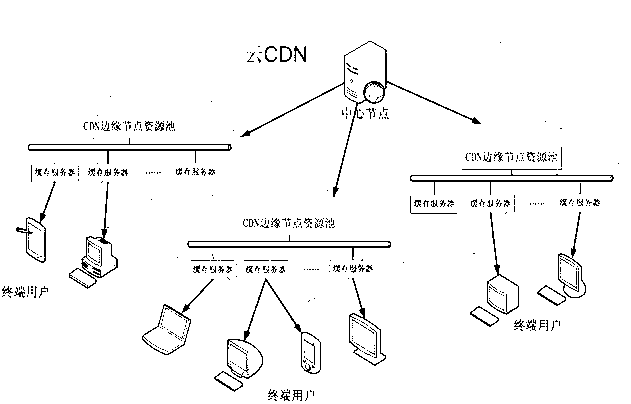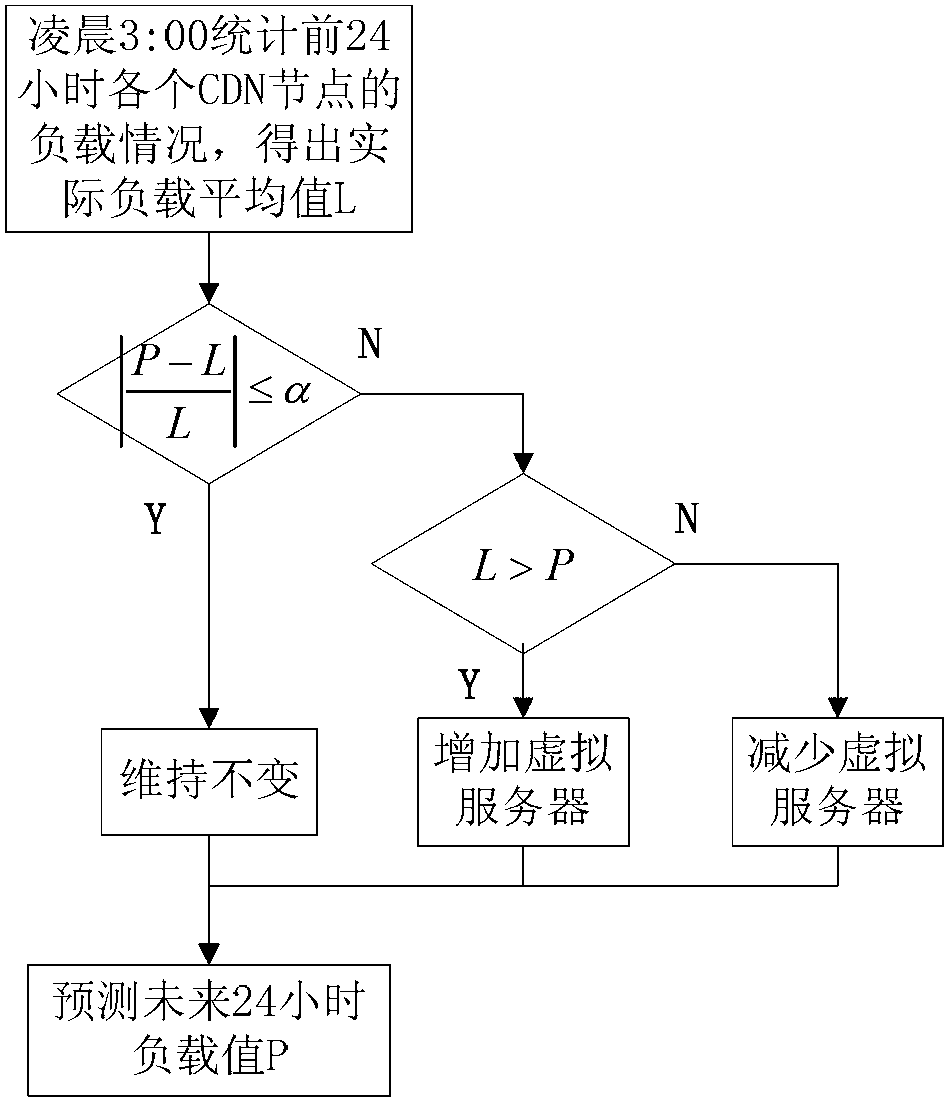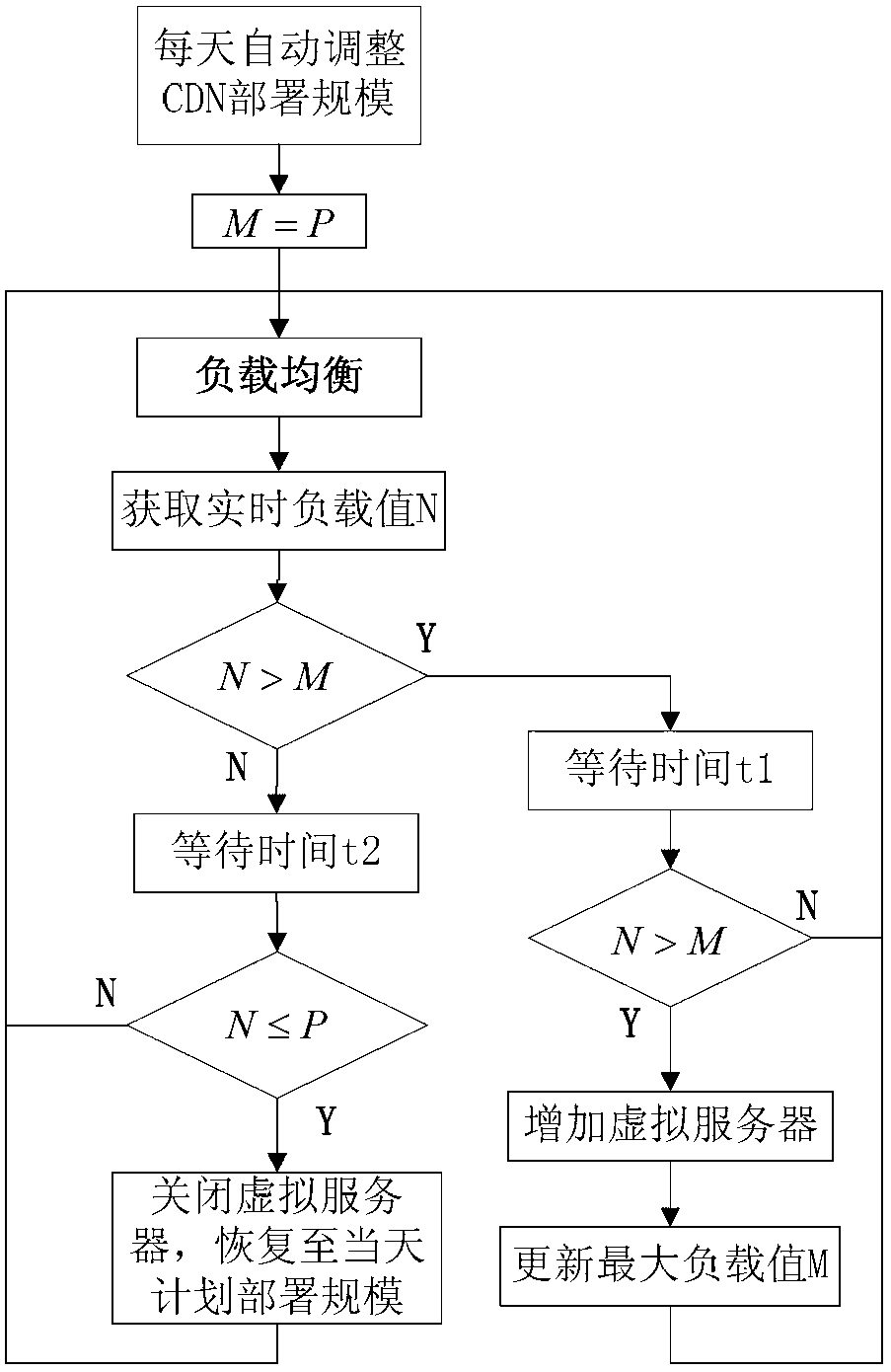Statistical-prediction-based automatic cloud CDN (Content Delivery Network) resource automatic deployment method
An automatic deployment and resource technology, applied in the field of communication, can solve the problems of low resource utilization rate and poor elastic expansion capacity, and achieve the effect of reducing energy consumption and operation and maintenance costs, reducing waste of resources, and improving utilization rate
- Summary
- Abstract
- Description
- Claims
- Application Information
AI Technical Summary
Problems solved by technology
Method used
Image
Examples
Embodiment
[0045] Such as figure 1 As shown, the cloud CDN architecture is mainly divided into two parts: central nodes and edge nodes. The central node is mainly responsible for global content management, resource management and service scheduling, and distributes content to each edge node through PULL or PUSH; while the edge node is the carrier of cloud CDN content distribution, and the edge node closest to the user will Internet content is transmitted directly to the user terminal. Using cloud computing virtualization technology, the resources of each edge node are concentrated in the resource pool for unified management, and the corresponding cache server is automatically deployed according to the load of the edge node.
[0046] The principle of the automatic deployment of cloud CDN resources in the present invention is as follows: at a certain moment every day, each edge node of the cloud CDN predicts the load prediction value of the day according to the prediction model, and deplo...
PUM
 Login to View More
Login to View More Abstract
Description
Claims
Application Information
 Login to View More
Login to View More - R&D
- Intellectual Property
- Life Sciences
- Materials
- Tech Scout
- Unparalleled Data Quality
- Higher Quality Content
- 60% Fewer Hallucinations
Browse by: Latest US Patents, China's latest patents, Technical Efficacy Thesaurus, Application Domain, Technology Topic, Popular Technical Reports.
© 2025 PatSnap. All rights reserved.Legal|Privacy policy|Modern Slavery Act Transparency Statement|Sitemap|About US| Contact US: help@patsnap.com



